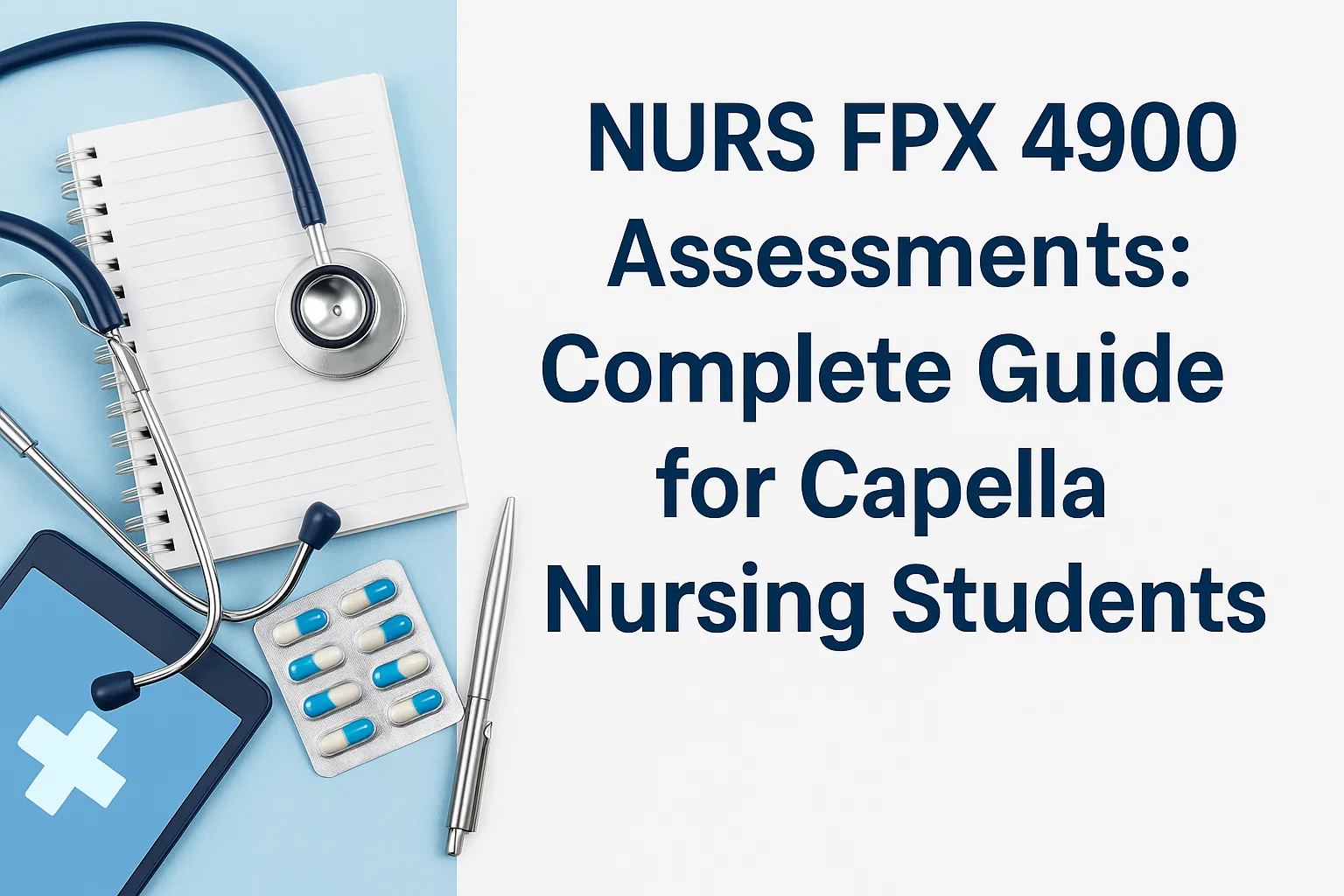As the healthcare field continues to evolve, evidence-based practice (EBP) has become a cornerstone of evidence-based practice in nursing, ensuring that patient care is grounded in the most current and effective research. For both nursing students and professionals, understanding what evidence-based practice is—and how to apply it—is essential for delivering high-quality outcomes. However, writing an evidence-based practice nursing paper can be challenging in terms of structure and clarity. In this guide, we will explain what evidence-based practice involves, offer tips for writing an effective evidence-based practice in nursing paper, and provide practical examples to support your understanding and application.
What is Evidence-Based Practice (EBP) in Nursing?
Evidence-based practice (EBP) is a foundational concept in modern evidence based practice nursing. It is defined as the “conscientious, explicit and judicious use of current best evidence in making decisions about the care of individual patients.” This evidence based practice definition highlights the integration of the best available research with clinical expertise and the individual needs and preferences of patients. The goal of EBP is to improve patient outcomes, reduce healthcare costs, and ensure nursing interventions are grounded in proven, effective methods.
There are three key components of EBP.
- Best Research Evidence: This is the highest level of research, including randomized controlled trials (RCTs), systematic reviews, and meta-analyses.
- Clinical Expertise: The skills and experience of the nurse or healthcare professional to apply the evidence to the patient care context.
- Patient Preferences: Values, preferences, and needs of patients that should inform decision-making.
The Importance of EBP in Nursing
There is more than one reason why evidence-based practice is essential in nursing:
- Increased Patient Outcomes: EBP guarantees that nurses are giving the most effective care as per the most up-to-date research, supporting better patient recuperation rates, less complications, and optimizing overall health outcomes.
- Increased Professional Competency: Nurses that use EBP are always learning and keeping up with the most recent research while also improving their clinical skills.
- Cost-Effective Care: Nurses can use the most effective and evidence-supported treatments to avoid using unnecessary treatments and focus resources on what works best.
How to Write an Evidence-Based Nursing Paper
An evidence-based nursing is written to show how EBP principles can be used in the clinical situation, topic, or research question. Whether your paper is for a thesis, research paper, or case study, all you need is to provide clear research evidence and patient care outcomes. Below is a step-by-step guide on how to structure an EBP in nursing paper. You can also explore how to write a nursing reflection essay to enhance your critical thinking and writing skills.
1. Choose a Relevant Topic
The first stage in writing an evidence-based nursing in paper is to choose a topic that is relevant to current nursing issues. For instance, you can think about topics that are related to patient care, clinical challenges, as well as recent trends in healthcare. Examples might include:
- Pain management in post-surgical patients.
- Preventing hospital-acquired infections (HAIs) is the role of nurses.
- The effectiveness of wound care techniques in patients with diabetes.
Your topic should be focused and researchable. Narrowing your scope will enable you to find evidence that is relevant and applicable to your paper.
2. Formulate a Research Question
In an evidence-based nursing, a clear research question is important. It will help to guide your search for evidence and to focus your argument. Your question should be specific, concise, and answerable with evidence already available. For instance, an example of research question could be:
- “What are the most effective interventions for managing pain in post-operative hip replacement patients?”
- “How does nurse staffing affect patient safety in intensive care units (ICUs)?”
3. Conduct a Literature Review
The next step in the process is gathering evidence. For any evidence-based nursing, a thorough literature review is essential. In order to obtain quality and reliable sources, look for systematic reviews, meta-analyses, RCT’s and clinical guidelines. Here are a few suggestions for successful literature review.
- Find peer-reviewed articles by using databases such as PubMed, CINAHL, Cochrane Library, and Google Scholar.
- Recent studies should be focused on to ensure that the evidence you use is current and relevant to current practice.
- Try to find studies that concentrate on the clinical outcomes for supporting your research question.
- Review clinical practice guidelines of reputable organizations including American Nurses Association (ANA) and National Institute for Health and Care Excellence (NICE).
4. Critical Appraisal of Evidence
After you have obtained literature that is pertinent, the following phase entails critically appraising the evidence. Not all research is equal; hence, it is important to the quality and validity of studies you include in your paper. When appraising evidence, consider:
- Evidence is usually connected with good quality to randomized controlled trials (RCTs) and to systematic reviews.
- Larger studies (sample size) are considered more reliable than smaller ones.
- Relating the studies to your research question: Studies must answer your research question or provide valuable insights.
- Then, we evaluate if the study was well conducted. Were the study design biased? Were data used to draw support for the conclusions?
5. Apply the Evidence
In an evidence-based nursing , summarizing the research is not enough. It is important for you to show how the evidence can be used in real clinical practice. It implies making sense of the research findings and suggesting actionable interventions. For example:
- When a study shows that early mobilization reduces post-operative recovery times, you can advise that early mobilization be included in nursing care plans. Learn more about how to write a perfect nursing care plan.
- If research shows that hand hygiene protocols do lower the incidence of hospital-acquired infections, you could suggest that more stringent infection control policies be instituted in the nursing unit.
6. Discuss the Patient and Clinical Context
In addition, you need to consider the clinical context and patient preferences in your evidence-based nursing . Although evidence may indicate a particular intervention, it is important to consider the idiosyncrasy of your patient population’s needs and preferences. Discuss how the research fits with patient values and the patient’s own circumstances, as well as the resources that are available in the clinical setting. For instance:
- Is there any allergy or contraindication to the recommended treatment in the patient?
- How comfortable is the patient with a certain intervention?
- What institutional constraints may there be that will influence the implementation of evidence-based interventions?
7. Conclusion and Recommendations
The main findings of your paper should be summarized in your conclusion, and you should also suggest recommendations based on the evidence-based practice you have examined. This could include suggestions for improved nursing protocols or adopting new guidelines to address areas that may require further research. Evidence-based practice ensures that these recommendations are grounded in reliable data and clinical expertise.
For example:
In my opinion, based on the evidence-based practice presented, it is advised that nurses should implement a pain management protocol that includes both pharmacologic and non-pharmacologic interventions for post-operative patients. Further research should focus on the long-term outcomes of early mobilization in post-surgical recovery to strengthen the evidence for its widespread use.
Example of an Evidence-Based Nursing Paper
Let us use an example to illustrate the process of writing an evidence-based nursing . Let’s say you have to look into pain management of post-surgical patients. Your research question could be:
“What is the most effective pain management strategy for post-surgical patients in a hospital setting?”
- Research question: “What is the most effective pain management strategy for post-surgical patients in a hospital setting?”
- Literature Review: Review current studies on pharmacological interventions (opioids, non-opioids) and non-pharmacological approaches (such as guided relaxation, physical therapy).
- Critical Appraisal: Assess the quality of evidence from randomized controlled trials, systematic reviews, and from clinical guidelines. For instance, find results of studies guided towards better patient outcomes (reduced pain, speeding up the recovery).
- Apply the Evidence: The evidence suggests a multimodal approach to pain management with pharmacological treatments such as opioids for breakthrough pain and NSAIDs for inflammation along with non-pharmacological treatments such as ice therapy and guided relaxation.
- Conclusion: Based on the evidence, recommend implementing a multimodal pain management protocol for post-surgical patients to improve patient outcomes and reduce opioid dependency.
Conclusion
An evidence-based nursing r is an important writing skill for any nursing student or healthcare professional. By understanding the key components of EBP in nursing such as selecting a relevant topic, conducting a literature review, critically appraising evidence, and applying the findings to patient care, then you will be able to produce a well-supported nursing paper. Keep in mind that you need to show not only that research can be done but also how research can contribute to patient outcome in actual clinical settings.
References for Further Reading
- National Institutes of Health (NIH) – PubMed Database.
- American Nurses Association (ANA): The Role of Evidence-Based Practice. Link to source
- Cochrane Library: Systematic Reviews and Meta-Analysis.
By leveraging these sources and following the tips above, you’ll be well on your way to writing an impactful evidence-based nursing that reflects the best practices in healthcare.
Read also: Hypertension in Pediatric Patients



